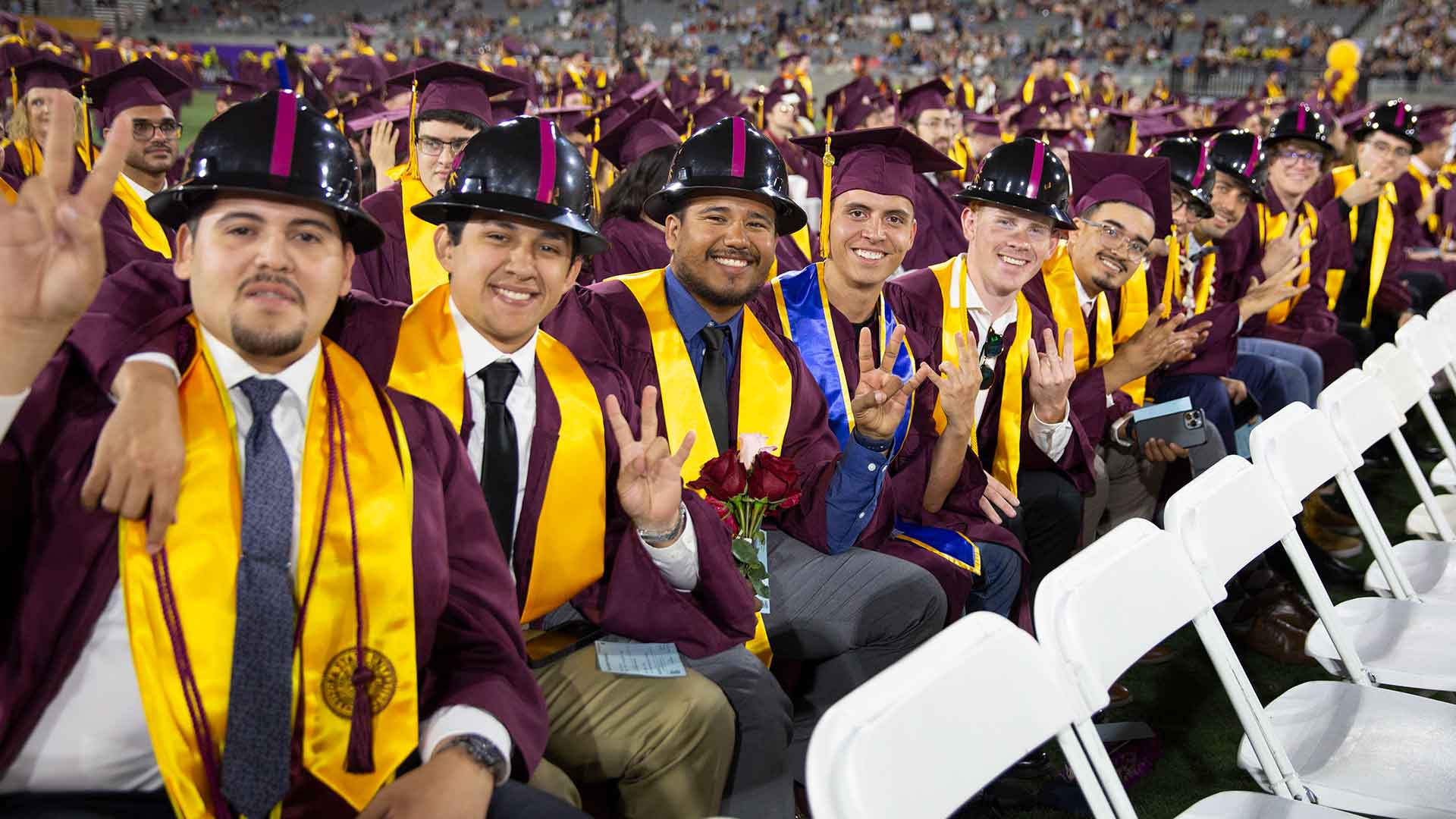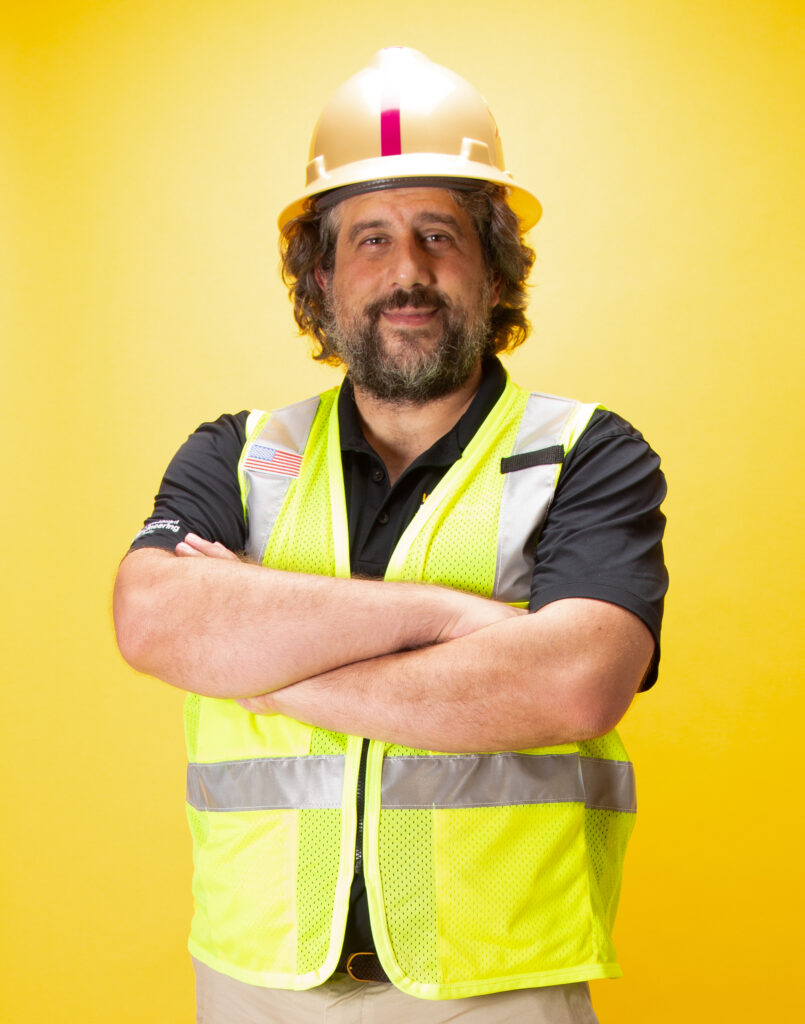
Constructing a legacy
Core values of collaboration, partnership and entrepreneurship drive the success of the Del E. Webb School of Construction

The construction industry is poised to grow dramatically during the next decade. In Arizona, there is demand for every type of structure from affordable houses to large industrial complexes, not to mention roadways and bridges needed to serve everyone now calling Arizona home. In order for those buildings to take shape, there is a connected demand for the skilled trade workers and construction management personnel who are vital to each project’s success.
“People are getting hired left and right,” says Anthony Lamanna, the Del E. Webb School of Construction Programs Chair and Sundt Professor of Alternative Delivery Methods and Sustainable Construction. “We could graduate three times as many students and there would still be jobs available.”

Anthony Lamanna became the chair of the construction management and technology program five years ago and oversees the Del E. Webb School of Construction.
For the past five years, Lamanna has held the role of overseeing the Del E. Webb School of Construction, a part of the School of Sustainable Engineering and the Built Environment, one of the seven Ira A. Fulton Schools of Engineering.
He says the connection to the School of Sustainable Engineering and the Built Environment gives the Del E. Webb School of Construction an edge because the School of Sustainable Engineering and the Built Environment is not only home to Del E. Webb’s construction management and technology and construction engineering programs, but also the civil engineering, environmental engineering, and sustainable engineering programs. He says the unique collaboration enables faculty, students, alumni and industry partners to address and solve issues related to the construction and sustainability of the built environment in our communities, both locally and globally.
Construction and sustainability are two subjects that have been at the forefront of Lamanna’s research since he earned his doctorate in civil engineering from the University of Wisconsin-Madison. He has sought to establish standards for repairing and retrofitting existing buildings and designing structures for adaptive reuse. For example, he has looked at adapting a building once used as a funeral home and turning it into a bookstore.
Lamanna also spent a large amount of time in New Orleans prior to and after Hurricane Katrina in 2005. He worked to repair hurricane- and tornado-damaged structures as well as design high wind resistance retrofittings.
“Lamanna’s research contributions have found their way into structural codes and standards, thus influencing real-world structural design and construction,” says Ram Pendyala, director of the School of Sustainable Engineering and the Built Environment. “His work has helped advance industry partnerships for the Del E. Webb School of Construction.”
Lamanna says that since accepting the position with the Del E. Webb School of Construction, he has seen a tremendous amount of growth in the program and has led the effort for the programs to gain accreditation through the American Council for Construction Education, or ACCE, and the Accreditation Board for Engineering and Technology, or ABET — A meticulous process that he says he has grown to understand while serving as an external program evaluator for both organizations.
Del E. Webb legacy
Construction management schools were first created by construction companies needing workers with skill sets that fit the unique factors of the job site.
Arizona State University saw the need early and added a Department of Construction in 1957 alongside the architecture program before it was moved to what was then known as the College of Engineering and Applied Sciences. It would be decades before other universities saw the need to partner with the industries in which their graduates would be working and create construction programs of their own.
The Del E. Webb School of Construction, as it’s now known, was established in 1992 with an endowment from the Del E. Webb Foundation. Webb was the founder of the Del E. Webb Construction company in Arizona in the mid-1920s. By the 1960s it became one of the largest companies in the United States. His legacy for crafting unique communities can be seen in his Sun City developments and ASU’s school of construction.
“Our motto is ‘We built that’ for a reason,” Lamanna says. “It is a point of pride, a phrase of recognition.”
ASU has graduated thousands of construction management and construction engineering students since its founding. Many of them have settled into roles here in the Valley, building the communities they live in. Since 2017, the school’s students have achieved 100% industry job placement within six months of completing their degrees.
From classroom to construction site
“Internships are highly correlated to full-time job offers in advance of graduation,” says Matthew Eicher, who oversees the Del E. Webb School of Construction’s internship program. “I think it helps the students to be more purposeful in the companies they approach, and they understand the expectations of the job market.”
Eicher is the assistant director for student development and outreach with the School of Sustainable Engineering and the Built Environment. He says the skills students learn in these placements cannot be replicated anywhere else.
“They put the curriculum into context and empower the students to make better decisions about which sector of construction is best for them,” Eicher says.
There are two mandatory internships for construction management and technology undergraduate students, with at least one being in the field exposing students to active construction sites.
Eicher says the construction management and technology program produces more successful graduates because the internship process gives students “clarity about the value of their degree.” Additionally, the curriculum improves from the feedback provided by not only the students, but also company evaluations.
In summer of 2021, there were 158 different employers for 264 construction undergraduate students registered for internships. Industry partners can be highly connected and participate in a myriad of activities that are closely tied to the academic enterprise, or they can simply post positions to ASU’s student recruitment platform. Eicher says it is truly up to the person or company to determine how involved they want to be in the development and recruitment of our students.
Del E. Webb School of Construction has also welcomed a number of industry professionals back into the classroom to serve as faculty associates, leading courses in their areas of specialization.
Industry Partner Circle
In an effort to support students not only with job placement upon graduation, the Del E. Webb School of Construction established the Industry Partner Circle, or IPC. The circle is made up of industry partners from across the state that want to see construction students strive. The industry partners provide funding for scholarships, endowed faculty positions and internship placements.
“We have created a pipeline for students to get the training they need,” Lamanna says. “It wouldn’t be possible without the industry support.”
As of June 2022, IPC has more than a dozen members, including Willmeng Construction, The Penta Group and Insurica. In some cases, these companies are owned and operated by Del E. Webb alumni or employ many Del E. Webb graduates.
Pendyala notes that the Industry Partner Circle is an example of the many kinds of industry partnerships that Lamanna’s leadership has enabled.
“He has worked tirelessly to build relationships and bring stakeholders together to advance the construction workforce of the future,” Pendyala says.
Eicher says he shares that sentiment.
“Lamanna is a collaborator. He brings people together, listens to their perspectives and makes decisions based on input,” Eicher says. “He is quick to acknowledge ideas and efforts made by individuals at all levels.”



































